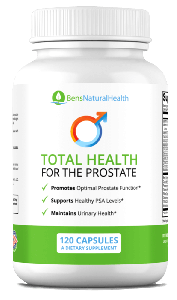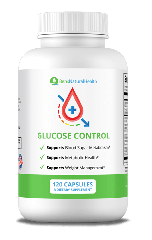- Q: What is Bacterial Prostatitis?
- Q: How Can I Recognize the Different Types of Bacterial Prostatitis?
- Q: What are the Bacterial Prostatitis Symptoms?
- Q: What are the Causes of Bacterial Prostatitis?
- Q: What are the Risk Factors for Bacterial Prostatitis?
- Q: Are there Possible Complications with Bacterial Prostatitis?
- Q: What is the Bacterial Prostatitis Treatment?
- Q: How Can I Cope With Prostatitis?
- Q: Are There any Alternative Therapies for Bacterial Prostatitis?
- Key Patient Questions on Bacterial Prostatitis
- Final Thoughts on Bacterial Prostatitis
- Our Medical Review Process
- Our Editorial Guidelines
- Medical Disclaimer
- Source
Prostatitis is a serious issue for males. Due to its high prevalence rate of 2% to 9%, around 25% of men end up visiting a urologist for prostatitis symptoms. In fact, prostatitis is so common that it accounts for about 2 million doctor’s visits every year in the United States.
Patients can develop either nonbacterial or bacterial prostatitis. The nonbacterial form is known for causing chronic pelvic pain and is often referred to as chronic pelvic pain syndrome, while bacterial prostatitis results from bacteria infecting the prostate.
Without proper management, prostatitis can profoundly affect a patient’s quality of life. In this article, we spoke with Dr. Shafqat, a recognized authority in urology, to discuss bacterial prostatitis in detail—particularly its types, symptoms, and treatment. During our interview, Dr. Shafqat provided a thorough collection of resources, evidence, and research, ensuring each section is based on accurate information. A medical doctor has meticulously reviewed all content for precision and reliability.
Q: What is Bacterial Prostatitis?
Dr. Shafqat answers: If you’re wondering, “How do you get bacterial prostatitis?” it’s important to understand that it occurs when bacteria infect the prostate. The bacteria often make their way to the prostate when infected urine flows backward from the urethra. Sometimes, persistent prostate irritation caused by bacteria is referred to as chronic nonbacterial prostatitis, which can last 3 months or longer.
However, acute prostatitis develops rapidly. In either scenario, bacterial prostatitis itself is not contagious through sexual contact; it remains in the prostate fluid and urine, rather than transmitting to a partner.
Q: How Can I Recognize the Different Types of Bacterial Prostatitis?
Dr. Shafqat answers: Prostatitis is a relatively common condition that inflames the prostate or nearby regions. In terms of bacterial prostatitis, there are two main types:
- Acute Bacterial Prostatitis: As the research shows, acute bacterial prostatitis affects 10% of all prostatitis cases. One of the most affected groups includes individuals aged 20 to 40, as well as those older than 70. This bacterial prostatitis occurs when the prostate gland suddenly becomes inflamed. This small organ in the shape of walnut is situated at the bladder’s base in male patients.
The prostate gland is responsible for secreting prostatic fluid and nourishing the sperm. This prostatic secretion features around 70% of the total seminal volume. When a male ejaculates, their prostate gland starts to squeeze the fluid into their urethra. The prostatic ducts are the ones that open into the floor of a segment of the urethra.
A bacterial infection often triggers the condition. The infection begins when bacteria inside the urine leaks towards the prostate, causing prostate irritation and infection. In other words, bacteria spread all over the prostate gland and trigger pelvic pain and urinary tract symptoms.
- Chronic Bacterial Prostatitis: Chronic prostatitis is quite a common condition. It has a lifetime prevalence rate of 1.8%-8.2%. This prostatitis triggers recurrent urinary tract infection (UTIs), prostate infection, inflammation, and swelling. People can develop chronic pelvic pain or neuropathic pain. The prostatic pain can last a minimum of 3 months. Because of the consistent pain, affected individuals are often referred to a psychologist alongside phototherapy, physical therapy, and pain management tactics. What it does have in common with acute bacterial prostatitis is the trigger. Sometimes this condition is caused by the same bacterial strains than acute prostatitis. However, chronic bacterial prostatitis can also be triggered by infrequent pathogens such as M. tuberculosis in immunocompromised patients.
Although prostatitis is the most common urological problem in males under 50 and the third most common in men over 50, acute bacterial prostatitis is less common than Chronic Prostatitis/Chronic Pelvic Pain Syndrome (CP/CPPS). Acute prostatitis is typically linked to a urinary tract infection, bladder obstruction, or other predisposing factors.
Q: What are the Bacterial Prostatitis Symptoms?
Dr. Shafqat answers: Symptoms vary depending on the cause and specific type of bacterial prostatitis. In general, people may notice:
- Flu-like signs
- Painful urination
- Pelvic pain
- Pain in the rectum or scrotum
- Infected urine (bloody or cloudy urine)
Below is how each type usually presents:
Acute (Sudden) Prostatitis
Acute bacterial prostatitis often appears suddenly with severe symptoms. Patients may need to seek immediate medical care. Urine testing can reveal bacteria. Typical symptoms include:
- Fever
- Chills
- Difficulty emptying the bladder
- Nocturia (frequent urination at night)
Chronic Bacterial Prostatitis
Chronic bacterial prostatitis is usually diagnosed via prostate fluid and urine cultures. The condition can last a long time, with symptoms that fade and then return. Common signs include:
- Painful ejaculation
- Pain in the penis, testicles, bladder, or the area between the anus and penis
- Frequent urge to urinate
Note: There is also asymptomatic prostatitis. The asymptomatic inflammatory prostatitis doesn’t have any signs of infection, and it’s often a painless condition. With asymptomatic inflammatory prostatitis, it becomes difficult for people to know if they have inflammation. That’s why most asymptomatic inflammatory prostatitis cases get diagnosed by accident.
Q: What are the Causes of Bacterial Prostatitis?
Dr. Shafqat answers: Multiple kinds of bacteria can induce bacterial prostatitis. These bacteria may be found in the prostate fluid, urine, or blood. The same organisms that commonly cause urinary tract infections are usually the culprits behind acute bacterial prostatitis—particularly the gram-negative bacteria within the Enterobacteriaceae family.
Typical bacterial triggers include:
- Enterobacter species
- Escherichia coli
- Klebsiella species
- Proteus mirabilis
- Pseudomonas aeruginosa
Sexually transmitted bacteria, such as gonorrhea or chlamydia, can also cause acute bacterial prostatitis. Other possible causes include:
- Perineum injury (the region between the scrotum and rectum)
- Inflammation of the urethra
- Epididymis inflammation
- Phimosis (inability to retract the foreskin)
- Cystoscopy
- Bladder outlet obstruction
- Prostate cancer
- Benign prostatic hyperplasia
Sometimes, a prostatic abscess (pus collection) can form due to a bacterial infection, trauma, or surgery. Nerve damage in the lower urinary tract may also predispose individuals to bacterial infection.
Q: What are the Risk Factors for Bacterial Prostatitis?
Dr. Shafqat answers: Risk factors differ slightly for acute vs. chronic bacterial prostatitis, but anything that encourages bacterial growth or entry into the prostate can raise a person’s risk.
Acute Bacterial Prostatitis
Most acute cases stem from an ascending urethral infection or intraprostatic reflux (when infected urine flows back into the prostate). Acute prostatitis can also develop following catheterization or cystoscopy. Additional risk factors include:
- Benign prostatic hypertrophy
- History of STIs
- Compromised immune system
- Phimosis
- Prostate manipulation (urinary catheter, transrectal prostate biopsy, transurethral surgery, or urodynamic studies)
- Risky sexual behaviors
- Genitourinary infection (e.g., epididymitis, urethritis, orchitis)
- Urethral stricture
In one study of 878 prostate patients, about 2% developed acute prostatitis following a prostate biopsy, with 1% experiencing bacteremia and 0.2% sepsis. This highlights that prostate manipulation is a notable risk factor.
Chronic Bacterial Prostatitis
Chronic bacterial prostatitis shares many risk factors with acute infection, including anything that can lead to bladder issues, prostate irritation, or bacterial growth in the urethra. Research also points to certain conditions:
- Bladder cancer: Even though it’s not the most common factor, people who smoke or have other risk factors for bladder cancer could also develop chronic prostatitis.
- Family history of prostate cancer: This might warrant regular PSA testing, as it can raise the likelihood of chronic prostatitis.
Any scenario allowing backward bacterial movement (retrograde flow) can predispose someone to chronic bacterial prostatitis.
Q: Are there Possible Complications with Bacterial Prostatitis?
Dr. Shafqat answers: Yes. When bacterial prostatitis is left untreated, it can cause:
- Urinary difficulties
- Sepsis (if bacteria spread to the bloodstream)
- Prostatic abscess (pus buildup leading to swelling and inflammation)
- Infertility
- Semen abnormalities
Timely treatment typically leads to a good prognosis. If antibiotics fail, surgery might be required. Untreated prostatic abscesses have been linked to infertility, and acute prostatitis can become chronic if not managed properly.
Q: What is the Bacterial Prostatitis Treatment?
Dr. Shafqat answers: The appropriate prostatitis treatment plan depends on whether prostatitis is acute or chronic, the severity of symptoms, and potential antibiotic resistance. We tailor each approach to the individual’s response and underlying factors.
Antibiotics
Antibiotics are the backbone of treating bacterial prostatitis, particularly those targeting pelvic pain syndromes (e.g., doxycycline, trimethoprim-sulfamethoxazole, ofloxacin, norfloxacin). For acute prostatitis, a 2- to 4-week antibiotic course plus pain medication is common. Hospitalization or IV antibiotics might be necessary if symptoms are severe.
For chronic prostatitis, a 4- to 6-week course of oral antibiotics (e.g., levofloxacin, ciprofloxacin, trimethoprim-sulfa) is often prescribed. One challenge is that many antibiotics have limited ability to penetrate prostate tissue. Fluoroquinolones (e.g., Levaquin) are preferred due to better prostate fluid penetration.
When acute prostatitis is especially severe, doctors might use parenteral antibiotics like cephalosporin or penicillin, sometimes paired with an aminoglycoside.
Alpha-blockers
Medications such as tamsulosin (Stronazon, Diffundox, Pinexel, Flomaxtra, etc.) relax the bladder neck and muscle fibers in the prostate, improving urinary flow and easing pain. If there’s no improvement within 4–6 weeks, these drugs may be discontinued.
NSAIDs (Anti-Inflammatory Agents)
Over-the-counter pain relievers, like ibuprofen or aspirin, can help reduce inflammation and discomfort. However, NSAIDs alone may not be sufficient for chronic pelvic pain syndrome; they’re often combined with alpha-blockers for better relief.
Anticholinergic Drugs
Anticholinergics (e.g., oxybutynin, tolterodine) can reduce urinary contractions, helping individuals who experience frequent urges to urinate. However, as the study shows, they’re not ideal for men with an enlarged prostate (like those with BPH), as they can lead to urinary retention. More research is needed to understand their role in chronic pelvic pain management fully.
Q: How Can I Cope With Prostatitis?
Dr. Shafqat answers: Several self-care measures can help manage the condition alongside medical treatment:
- A warm bath or a heating pad: The heat will penetrate the prostate, decrease inflammation and swelling, and boost the natural rejuvenation process. However, soaking in cold water can have the exact opposite effect.
- Relaxing techniques: According to experts, finding different ways to relax can help with anxiety and stress, known for causing flare-ups. By relaxing, people learn how to feel more in control of their body and urinary system. Options like listening to music, meditation, and deep breathing are a great way to start. They help distract people and take their minds off the pain. While yoga can aid with urinary incontinence and may also improve urine flow. Even though relaxation doesn’t actually treat the pain, it helps make it more bearable.
- Prostatic massage: Massaging the prostate through the rectum is a great way to alleviate the discomfort. It is beneficial for the urinary system as well. If the prostate is extremely vulnerable or tender and causes pain and discomfort, the doctor will use a general anesthetic before they do the massage.
- Removing alcohol and caffeine: To manage chronic pelvic pain and improve the urinary system, experts are recommending that you eliminate the alcohol and caffeine intake. This can decrease the irritation of the prostate and bladder. It’s also a practical strategy for flushing out the bacteria more quickly.
- Diet change: Research shows that prostate cancer could be slowed down or prevented with anti-oxidant and low-fat meals. Particularly those packed with valuable nutrients like lycopene, mineral selenium, and Vitamin E. But, there is more. Supplying the body with nutrients, healthy fats, fruits, and veggies can protect the prostate. Foods that are packed with omega-3 fatty acids are a great way of preventing and decreasing inflammation. This can help get the urinary system back on track. So, feel free to include more salmon, berries, tomatoes, nuts, broccoli, and citrus in your diet.
Q: Are There any Alternative Therapies for Bacterial Prostatitis?
Dr. Shafqat answers: Some patients find relief through complementary approaches, though scientific evidence is still evolving.
- Acupuncture: This traditional Chinese practice can alleviate pain and help improve voiding without the chemical side effects of certain medications.
- Biofeedback: With specialized equipment, patients learn to control bodily functions, notably muscle relaxation and contraction, to reduce pelvic pain.
- Supplements and herbal remedies: While no herb specifically cures prostatitis, anti-inflammatory options such as ryegrass and saw palmetto extract have shown promise. Saw palmetto has been used for prostate issues for years and may help reduce urinary symptoms in some men.
Q: What Other Useful Tips Should People Know?
Dr. Shafqat answers:
- Bacterial prostatitis can sometimes infect nearby tissues—not just the prostate itself.
- Having prostatitis does not necessarily increase your risk of prostate cancer.
- Complete the full treatment course, even if you feel better, unless advised otherwise by your doctor.
- You can still engage in intercourse unless it causes pain or discomfort.
- Early diagnosis is advantageous. Doctors might test your urine, blood, and possibly perform imaging. Occasionally, secretions from a prostatic massage are checked for bacteria.
- You can continue daily activities with prostatitis, but burning or discomfort might occur, highlighting the importance of antibiotics or other treatments.
Q: What are the Prevention Strategies for Bacterial Prostatitis?
Dr. Shafqat answers: Preventing bacterial prostatitis is accomplished by combining lifestyle and medical precautions to reduce the chances of infection. Prevention of every case is not possible, but the following may effectively limit bacterial prostatitis development:
- Maintain good hygiene: Good cleanliness of the area of the genitals definitely prevents the spreading of bacterial infection to the prostate.
- Stay hydrated: Water can help the urinary system wash the bacteria away and reduce the likelihood of infection.
- Practice safe sex: Use protection during sex. Physical and sex life with the use of protection reduces the opportunity for sexually transmitted diseases that sometimes lead to prostatitis.
- Avoid holding urine: Frequent urination prevents the formation of a build-up of bacteria within the urinary system.
- Manage other underlying conditions: Treat any urinary tract infection, bladder infection, or any urinary conditions immediately to prevent the spreading prostate.
- Be cautious while using a catheter: If a catheter is to be used, only employ properly sterilized catheters and under medical supervision to reduce the chances of infection.
- Promote immune health: The immune system fights off infections, hence keeping it healthy through a healthy diet, regular exercise, and stress management.
For patients with recurrent bacterial prostatitis, we may sometimes prescribe them low-dose antibiotics as a preventive measure to reduce their risk of infection.
Key Patient Questions on Bacterial Prostatitis
Q: Does bacterial prostatitis show up in urinalysis?
Dr. Shafqat answers: Yes, bacterial prostatitis may be diagnosed with urinalysis in many instances. The urine sample will reveal the presence of an infection with the aid of the following: white blood cells, bacteria, and inflammatory markers.
But sometimes a urine culture and analysis of the prostate fluid will be required if a correct diagnosis has not been established yet. Even if urinalysis results are normal and the patient has persisting symptoms, further evaluation by a doctor is recommended.
Q: Does age affect the severity of bacterial prostatitis, and are older men at higher risk of complications?
Dr. Shafqat answers: Yes, age affects the risk and the severity of the complications. Older men with pre-existing diseases including an enlarged prostate or diabetes may have a harder time clearing the infection. They also will be at a higher risk of having chronic bacterial prostatitis and frequent infections. Timely treatment and detection will prevent the onset of complications such as an abscess and chronic pain.
Q: Can bacterial prostatitis lead to sexual dysfunction, and what strategies can help manage intimacy issues?
Dr. Shafqat answers: Bacterial prostatitis can often cause pain with ejaculation, low libido, and erection issues. The inflammation and irritation of the nerves might be the reason behind them. Symptoms can be alleviated with antibiotics and anti-inflammatory medication. Open communication with a partner and the use of pelvic floor therapy and relaxation techniques might also be useful during the recovery period. Medical advice should be sought if issues persist.
Q: What steps can I take to prevent recurrent bacterial prostatitis, especially if I’m prone to repeated infections?
Dr. Shafqat answers: To reduce the likelihood of frequent episodes of bacterial prostatitis, be clean and hydrated and fully drain the bladder. Do not be sitting in the same position for a long time and treat any underlying disease including BPH and urinary tract infection. You may be put on long-term low-dose antibiotics and lifestyle modification if you get frequent recurrences. Regular check-ups can also help monitor prostate health.
Q: Could bacterial prostatitis impact my fertility, and what fertility assessments are available if I’m planning to start a family?
Dr. Shafqat answers: Yes, bacterial prostatitis can influence fertility by altering sperm quality and causing inflammation in the reproductive tract. It might also lower the motility of the sperm or block the ejaculatory ducts. You might be evaluated with a semen analysis if you’re concerned about fertility. Other tests such as hormone tests and scans might be required in a few cases. The treatment of the infection at an early stage can help improve reproductive outcomes.
Q: What are some common myths about bacterial prostatitis, and how can we distinguish fact from fiction?
Dr. Shafqat answers: One common misconception is that the cause of bacterial prostatitis necessarily involves sexually transmitted infections (STIs). While a few of them may be the direct etiology of an STI, the majority of them stem from non-sexually transmittable bacteria. The second misconception is that prostatitis and prostate cancer are the same—these two conditions are not the same at all. Lastly, antibiotics will necessarily cure bacterial prostatitis, although chronic forms may require a long course of treatment or alternate methods. Consulting with a doctor will be able to clear any concerns.
Final Thoughts on Bacterial Prostatitis
Managing bacterial prostatitis involves various therapeutic strategies, from antibiotics to lifestyle adjustments. Sometimes, switching medications or trying a new approach is necessary if initial treatments fail.
The key is understanding what causes your symptoms so you can tackle the root issue. By recognizing common signs and risk factors, patients can seek help before the condition worsens. Armed with accurate information about types, symptoms, and treatment options, you can take proactive steps to improve your quality of life and keep your prostate health in check.
Our Medical Review Process
At Ben’s Natural Health, we are committed to transparency, accuracy, and scientific integrity. Every piece of content is carefully developed by medical professionals and undergoes a thorough review every 12 to 24 months. This rigorous process ensures our information remains current, precise, and based on credible, evidence-backed research. We exclusively reference peer-reviewed studies from reputable medical journals, providing full citations and direct links to enhance trust and reliability. Learn more about our medical review process and research standards.
Our Editorial Guidelines
For over 25 years, Ben’s Natural Health has been a trusted source of scientifically accurate information on natural health. Our editorial guidelines uphold the highest standards of quality and integrity. Each article is written by qualified professionals—including doctors, dietitians, nutritionists, fitness experts, and surgeons—and undergoes independent quality checks. We prioritize transparency by clearly displaying contributor credentials and biographies at the beginning of every article. Read our editorial guidelines to learn more about our content creation and fact-checking process.
Medical Disclaimer
The content on this blog is for informational purposes only and should not be considered a substitute for professional medical advice, diagnosis, or treatment. While our articles are authored and reviewed by licensed medical professionals, they may not address your specific health concerns. Always consult your doctor or a qualified healthcare provider before making any medical decisions. Do not disregard or delay seeking professional advice based on the information provided here. Your use of this blog and its content is at your own risk.







